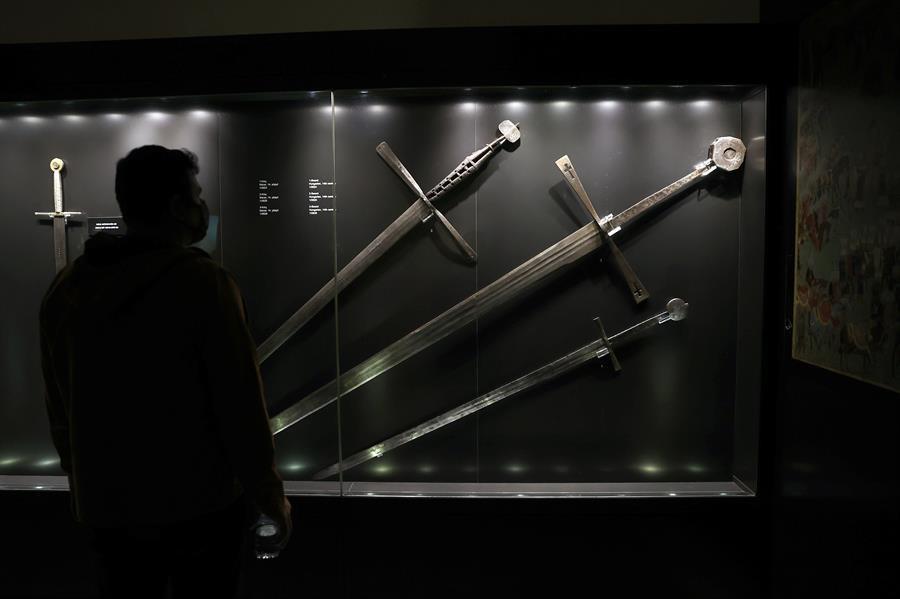
A group of restorers take care of historical weapons kept in the Inner Treasure building of Topkapı Palace, a marvel that has been home to the Ottoman dynasty for more than 400 years in Istanbul.
The building is one of the most visited places in the palace after the “Sacred Relics” section. The diversity, historical quality, function and aesthetics of weapons play an important role in this interest.
Covering a wide period of 1,300 years belonging to Turkish, Umayyad, Abbasid, Mamluk, Iran, Crimean-Tatar, Indian, European and Japanese cultures, the richest part of the collection consists of the weapons belonging to the Ottoman Empire.
In addition to the weapons of some Ottoman sultans and high-ranking statesmen, the collection includes much older items captured in the treasury of the rulers of the conquered regions or sent to the sultans as diplomatic gifts.
One of the earliest examples of the collection is the seventh-century sword of Mu’awiya bin Abu Sufyan, first caliph of the Umayyad Caliphate. Moreover, the 700-year-old swords of the Abbasid caliphs and Mamluk sultans are among the other early examples of the collection.
The collection includes more than 33,000 weapons with functions such as cutting, piercing, shooting, striking, crushing and firearms used during attacks on the battlefield and helmets, armor, shields and horse armors used in defenses.
The works that make up the collection, together with the mastery of the construction technique, are considered as a rich treasure that allow visitors to see the style unique to the region where they were produced in terms of decoration features.
The patterns and motifs used in the decoration draw attention to the fact that each weapon has been transformed into a rare work of art, not just a weapon of war.
Onur Recep Er, a restorer of the National Palaces Composite Artifacts Workshop, explained how the restoration and conservation of composite works were carried out in the workshop.
“During the restoration process, we examine the current state of the work, document its photographs and take notes on the deterioration we see. Then we move on to the restoration phase,” Er said.
Pointing out that the restoration has certain international rules and that they carry out the works in accordance with international standards, Er said they begin the restoration process in line with plans made.
The first of the works currently under restoration in the workshop is a sword and scabbard in the form of a Zulfiqar, which is estimated to belong to the end of the 16th century. Used as a ceremonial sword, the piece has golden decorations and is believed to have been a gift to the sultan of the period or a high-ranking statesman.